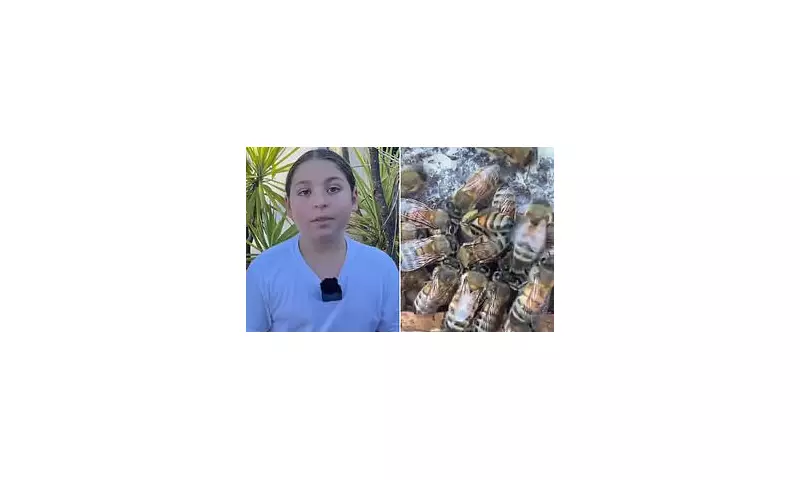
In an extraordinary display of expertise and compassion, professional beekeeper Nicholas Bard recently undertook what many would consider an impossible mission: safely relocating a massive colony of approximately 10,000 honeybees that had taken up residence in a Santa Rosa family's home.
The Unwanted House Guests
The homeowners discovered they had some unexpected tenants when they noticed an unusual buzzing sound coming from their exterior walls. Upon closer inspection, they found thousands of bees had established a thriving colony within their property structure.
Rather than reaching for pesticides or calling exterminators, the residents made the environmentally conscious decision to contact a professional beekeeper for humane removal. Enter Nicholas Bard of Madrone Beekeeping, whose expertise would prove invaluable in this delicate operation.
The Delicate Rescue Mission
Bard arrived at the property fully equipped with specialized beekeeping gear and a carefully devised plan. The colony had built an extensive network of honeycomb deep within the wall cavities, making extraction particularly challenging.
"When you're dealing with this many bees in a residential structure, patience and precision are everything," Bard explained during the operation. "The goal isn't just to remove the bees but to preserve the colony so it can continue to thrive elsewhere."
Why Bee Relocation Matters
Honeybees play a crucial role in our ecosystem, pollinating approximately one-third of the food crops we consume. With bee populations facing numerous threats worldwide, including habitat loss and pesticide exposure, responsible beekeepers like Bard are increasingly important for maintaining healthy bee populations.
"Many people don't realize that honeybees aren't typically aggressive when left undisturbed," Bard noted. "They're simply looking for a safe place to build their hive and raise their young."
The Removal Process
Bard's methodical approach involved:
- Carefully opening the wall section where the bees had established their hive
- Using specialized equipment to safely collect the queen bee, ensuring the rest of the colony would follow
- Gently removing honeycomb sections while minimizing disturbance to the bees
- Transferring the entire colony to specially designed transportation boxes
- Relocating the bees to a safe apiary where they can continue their vital pollination work
A Sweet Ending
The successful relocation not only solved the homeowners' bee problem but also provided Bard with a healthy new colony for his beekeeping operations. The bees will now contribute to local pollination efforts and honey production, turning what could have been a tragic extermination into a positive outcome for all involved.
As Bard packed his equipment after the multi-hour operation, he reflected: "Every successful relocation like this is a small victory for our local ecosystem. It shows that we can coexist with these incredible pollinators when we approach situations with knowledge and respect."
The Santa Rosa incident serves as an important reminder that humane wildlife solutions exist for what might initially seem like pest problems, offering hope for both homeowners and the essential creatures with whom we share our environment.





